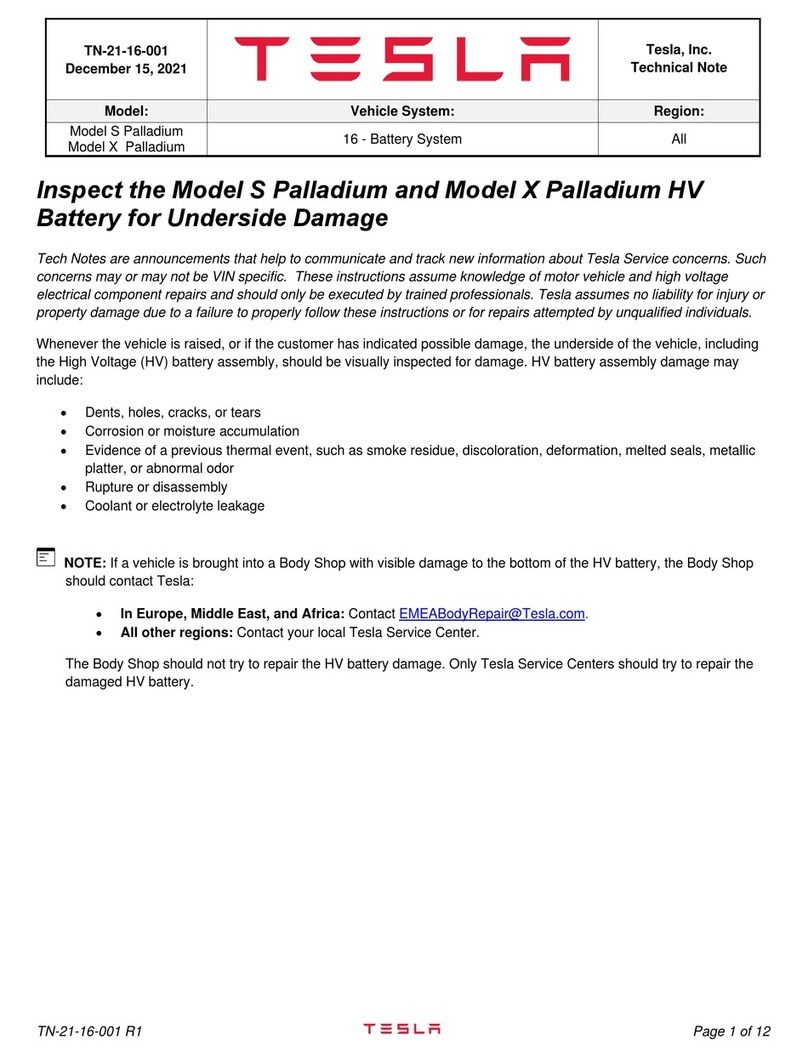TABLE OF CONTENTS
P/N: SC-15-94-001
IDENTIFYING MODEL S...................................................................................1
BADGING.....................................................................................................................................1
LARGE SCREEN..................................................................................................................... 2
CHARGE PORT....................................................................................................................... 2
HIGH VOLTAGE COMPONENTS ..................................................................3
OVERVIEW OF HIGH VOLTAGE COMPONENTS................................................... 3
HIGH VOLTAGE BATTERY................................................................................................ 4
DC-DC CONVERTER ........................................................................................................... 5
HIGH VOLTAGE CABLING................................................................................................. 6
CHARGERS................................................................................................................................7
DRIVE UNIT.............................................................................................................................. 8
LOW VOLTAGE SYSTEM ................................................................................9
12V BATTERY........................................................................................................................... 9
DISABLING HIGH VOLTAGE........................................................................10
FIRST RESPONDER CUT LOOP - FRONT TRUNK ..............................................10
CUTTING THE FIRST RESPONDER LOOP - FRONT TRUNK .......................... 11
FIRST RESPONDER DISCONNECT POINT - REAR PILLAR (NEWER
MODELS ONLY) ....................................................................................................................12
CUTTING THE FIRST RESPONDER DISCONNECT POINT - REAR PILLAR
(NEWER MODELS ONLY)................................................................................................13
STABILIZING MODEL S................................................................................. 14
AIRBAGS AND SUPPLEMENTARY RESTRAINT SYSTEM (SRS)
..... 15
AIRBAGS...................................................................................................................................15
AIRBAG INFLATION CYLINDERS.................................................................................15
SEAT BELT PRE-TENSIONERS ......................................................................................16
REINFORCEMENTS........................................................................................ 17
NO-CUT ZONES............................................................................................... 18
RESCUE OPERATIONS ................................................................................. 19
FULLY OR PARTIALLY SUBMERGED VEHICLES .................................................19
PUSHING ON THE FLOOR PAN....................................................................................19
FIREFIGHTING ..................................................................................................................... 20
HIGH VOLTAGE BATTERY - FIRE DAMAGE ......................................................... 20
LIFTING MODEL S .......................................................................................... 21
OPENING MODEL S ...................................................................................... 22
USING THE KEY...................................................................................................................22
OPENING DOORS...............................................................................................................22
OPENING REAR DOORS WITH NO POWER.........................................................22
OPENING THE TRUNK......................................................................................................23
OPENING THE HOOD (FRONT TRUNK) .................................................................23
HIGH VOLTAGE LABELS ............................................................................. 24
INDEX ................................................................................................................. 25



















































